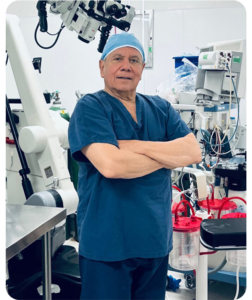
Stress is a common cause of back pain because your muscles tense up when you’re stressed and then causes pain. Going for a dip in the hot tub can help to get rid of your stress and pain by relaxing those tense muscles. Here are some of the benefits of going in the hot tub for your back:
- Improves your blood flow: The heat of the hot tub helps to raise your body temperature which in turn helps to improve your body’s circulation, blood flow, and helps your muscles relax.
- Relieves pressure on your spine: Your body’s weight is reduced by 90% when you’re in a hot tub. This helps to take the pressure off your joints, muscles, and spine which helps to reduce pain.
Back pain is one of the most common health problems around the world. Whether it comes from poor posture, stress, an injury, or a long day at work, many people experience stiffness, soreness, or aching backs. If you are looking for natural ways to ease the discomfort, you might want to consider a simple but effective option taking a dip in a hot tub.
Why Hot Water Helps with Back Pain
Warm water therapy has been used for thousands of years. It is gentle, soothing, and safe for most people. Hot tubs provide the perfect environment for this kind of therapy because they combine heat, buoyancy, and massage. These three factors work together to ease pain and relax tense muscles.
1. Heat Improves Blood Flow
The warmth of a hot tub helps to increase blood circulation. Better blood flow means more oxygen and nutrients reach your muscles and tissues. This helps your body heal faster and can reduce stiffness and soreness in your back. It also allows your muscles to relax more fully.
2. Buoyancy Takes Pressure Off the Spine
When you sit in a hot tub, your body becomes lighter. This feeling of weightlessness reduces the pressure on your spine and joints. For people with back problems, especially lower back pain, this relief can feel amazing. It gives your back a break from the constant stress of gravity and body weight.
3. Massage Jets Soothe Sore Muscles
Most modern hot tubs come with massage jets. These jets target key areas like the lower back, neck, and shoulders. The steady water pressure from the jets can help reduce muscle tension and knots. This can be especially helpful after exercise, a long day of standing, or if you suffer from chronic back pain.
Benefits of Regular Hot Tub Use
If you use a hot tub regularly, you may notice several long-term benefits:
- Reduced muscle tightness
- Less pain and discomfort
- Better sleep
- Improved flexibility
- Lower stress levels
Many people with arthritis or chronic back pain find that hot tub therapy becomes a valuable part of their self-care routine.
Safety Tips Before You Soak
Although hot tubs are generally safe, here are a few tips to make sure you enjoy the benefits without any risks:
- Keep the water temperature between 100°F and 104°F
- Soak for 15 to 20 minutes at a time
- Stay hydrated before and after your session
- Avoid alcohol or heavy meals before soaking
- Talk to your doctor if you are pregnant or have heart conditions
When Should You Avoid the Hot Tub?
While hot tubs can be great for pain relief, there are times when you should be careful. If you have a fresh injury, such as a new sprain or strain, the heat may increase swelling. Cold therapy may be better for the first 48 hours. Also, if you feel dizzy or lightheaded during your soak, get out and rest.
Final Thoughts
Back pain can affect your mood, energy, and overall quality of life. While it is not always easy to treat, hot tub therapy offers a simple and relaxing way to manage the pain. The combination of heat, water pressure, and weight relief makes it a powerful tool for recovery and relaxation. Always talk to your doctor before starting a new treatment, but don’t overlook the healing power of a warm soak. Sometimes the best remedies are also the most relaxing.
Resource Link:
National Library of Medicine – Hydrotherapy for Pain Management

